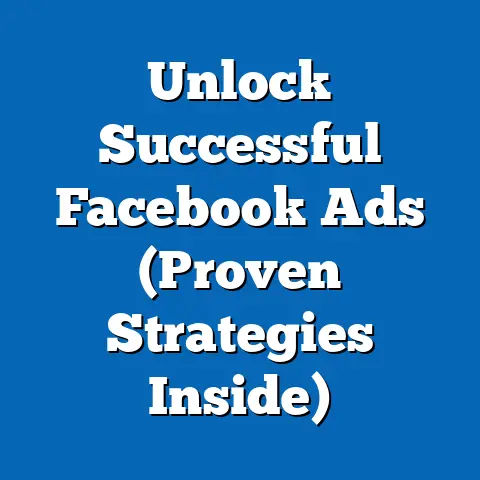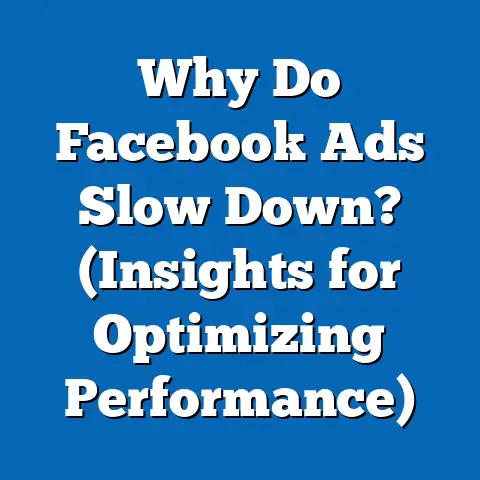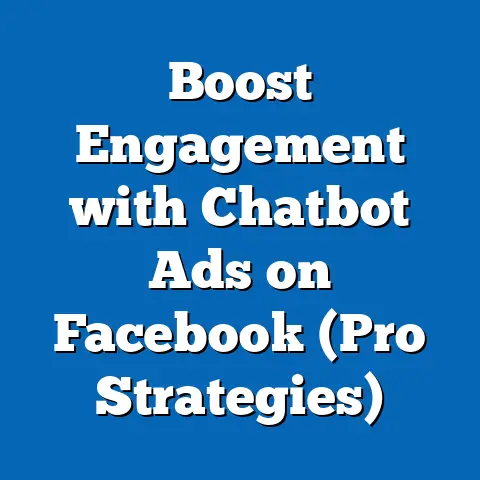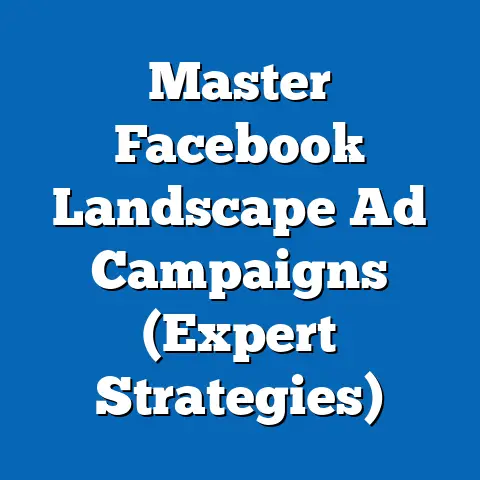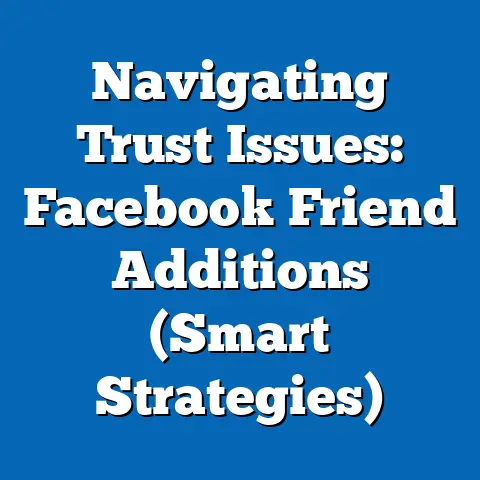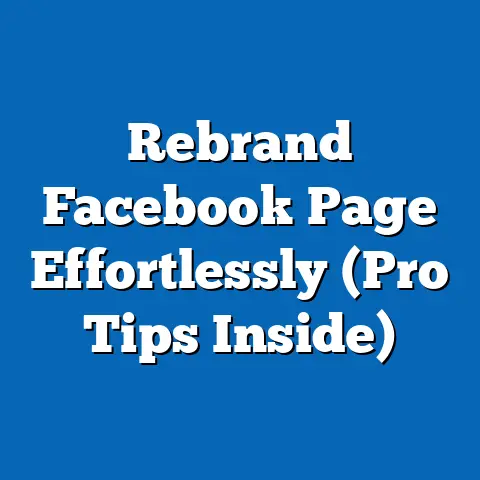Google Display vs Facebook Ads (Battle of Reach & Impact)
Google Display vs. Facebook Ads: The Battle of Reach & Impact
Before diving into the technical and strategic aspects of these platforms, it’s worth noting that the “ease of care” for advertisers—how accessible and user-friendly each platform is—plays a critical role in their adoption. Google Display Network, with its integration into the broader Google Ads ecosystem, often appeals to advertisers familiar with search advertising, though it can have a steeper learning curve for beginners due to its vast array of targeting options and settings. On the other hand, Facebook Ads, housed within Meta’s ecosystem, offers a more intuitive interface for small businesses and social media-savvy users, with simpler ad creation tools and visual-heavy formats.
Demographic Makeup of User Bases
Understanding the demographic composition of the audiences reachable through Google Display and Facebook Ads is fundamental to assessing their reach and impact. Google Display Network, spanning over 2 million websites, apps, and videos, reaches approximately 90% of global internet users, according to Google’s own data (Google Ads, 2023). This vast network includes users across all age groups, with a balanced distribution: 25% aged 18-24, 30% aged 25-34, 20% aged 35-44, and the remainder spread across older demographics (Statista, 2023).
Gender-wise, GDN’s audience is nearly evenly split, with 52% male and 48% female users globally. Geographically, GDN excels in penetrating diverse markets, including North America (35% of users), Europe (30%), and Asia-Pacific (25%), making it a go-to for international campaigns. Socioeconomically, GDN users span a wide income range, reflecting the diversity of the internet population, though higher-income users (earning $75,000+ annually) are slightly overrepresented due to targeted placements on premium content sites.
In contrast, Facebook Ads, leveraging Meta’s social media dominance, reaches over 2.9 billion monthly active users as of 2023 (Meta Investor Report, Q2 2023). The platform’s demographic skews younger, with 31% of users aged 18-24 and 29% aged 25-34, while only 15% are over 45 (Pew Research Center, 2023). Gender distribution is also balanced, with 54% male and 46% female users.
Geographically, Facebook has a strong presence in emerging markets, with 40% of users in Asia-Pacific and 20% in Latin America, compared to 15% in North America. Socioeconomically, Facebook’s audience includes a higher proportion of middle- and lower-income users, aligning with its accessibility on mobile devices in developing regions. This demographic contrast—GDN’s broader, more evenly distributed audience versus Facebook’s younger, mobile-first user base—sets the stage for differing advertising strategies.
Core Beliefs and Values (Platform Goals and Advertiser Appeal)
While “core beliefs” in the context of advertising platforms refer to their mission and value proposition to advertisers, both GDN and Facebook Ads prioritize reach and precision but with distinct approaches. Google Display Network operates on the belief that context and intent drive advertising success. Its value lies in placing ads alongside relevant content across its vast network, using machine learning to target users based on search history, interests, and behaviors, as evidenced by its 180 billion daily impressions (Google Economic Impact Report, 2023).
GDN appeals to advertisers seeking scalability and integration with search campaigns, emphasizing performance metrics like click-through rates (CTR) and conversions over social engagement. Its core strength is in intent-based targeting, where 70% of users are exposed to ads while actively seeking related information (Think with Google, 2022). This makes GDN a preferred choice for businesses focused on direct response and measurable ROI.
Conversely, Facebook Ads is built on the belief that social connections and community engagement fuel effective advertising. The platform’s mission is to connect brands with users through personalized, visually engaging content, as seen in its emphasis on formats like Stories and Reels, which garner over 1 billion daily views combined (Meta, 2023). Facebook appeals to advertisers who value brand awareness and community building, with 78% of its ad revenue coming from mobile placements that prioritize user interaction (Statista, 2023).
Unlike GDN’s focus on intent, Facebook thrives on interest-based targeting, leveraging detailed user data from profiles, likes, and interactions to deliver ads with emotional resonance. This fundamental difference—contextual intent versus social interest—shapes how each platform positions itself in the advertising ecosystem.
User Engagement Patterns (Equivalent to Voting Patterns)
In political analysis, voting patterns reveal how groups align with certain ideologies or candidates; in digital advertising, user engagement patterns indicate how audiences interact with ads and influence campaign outcomes. For Google Display Network, engagement is often measured by CTR and conversion rates, reflecting its focus on performance. Industry data shows GDN ads have an average CTR of 0.46% across sectors, with higher rates (0.7%) in industries like technology and finance where intent is clearer (WordStream, 2023).
Engagement on GDN is typically passive—users encounter ads while browsing content or watching videos on YouTube (a key GDN component)—with 65% of impressions occurring on mobile devices (Google Ads, 2023). However, engagement depth varies by demographic: younger users (18-24) are less likely to click (0.3% CTR) compared to 35-44-year-olds (0.5% CTR), suggesting older users are more responsive to intent-driven ads (Statista, 2023). Geographically, North American users show higher engagement (0.55% CTR) than those in Asia-Pacific (0.4% CTR), reflecting differences in internet maturity and ad saturation.
Facebook Ads, by contrast, prioritizes active engagement metrics like likes, shares, and comments, aligning with its social nature. The platform reports an average CTR of 0.9%, nearly double GDN’s, with particularly high rates (1.2%) in entertainment and retail sectors (Hootsuite, 2023). Engagement peaks on mobile, where 94% of ad impressions occur, and is strongest among 18-34-year-olds, who account for 60% of interactions (Meta, 2023).
Women also engage more frequently than men on Facebook (1.1% vs. 0.8% CTR), likely due to the platform’s emphasis on community and lifestyle content (Pew Research Center, 2023). Geographically, engagement is higher in emerging markets like India and Brazil (1.3% CTR) compared to North America (0.8% CTR), reflecting cultural differences in social media use. These patterns highlight Facebook’s edge in fostering interactive, emotionally driven responses versus GDN’s strength in capturing intent at scale.
Policy Positions on Major Issues (Advertising Features and Strategies)
Just as political groups have stances on key issues, advertising platforms have distinct “policy positions” on critical aspects like targeting, ad formats, and cost structures. Google Display Network emphasizes broad reach through contextual and behavioral targeting, offering tools like affinity audiences (based on long-term interests) and in-market audiences (based on purchase intent). Its ad formats—banners, responsive display ads, and video—prioritize flexibility across devices, with 50% of impressions served on YouTube (Google Ads, 2023).
Cost-wise, GDN operates on a cost-per-click (CPC) or cost-per-thousand-impressions (CPM) model, with an average CPC of $0.63 and CPM of $3.12, making it cost-effective for large-scale campaigns (WordStream, 2023). However, its reliance on third-party cookies (set to phase out by 2024) poses challenges, though Google’s shift to Privacy Sandbox aims to address this with anonymized targeting. GDN’s strategy suits advertisers targeting users mid-funnel, focusing on consideration and decision-making stages.
Facebook Ads, meanwhile, champions hyper-personalized targeting using first-party data from user profiles, groups, and behaviors, with over 200 targeting options available (Meta Business Help Center, 2023). Its ad formats—carousel, video, and Stories—prioritize visual storytelling, with 70% of users engaging with video content daily (Meta, 2023). Cost-wise, Facebook’s average CPC is higher at $0.97, and CPM stands at $7.19, reflecting its premium on engagement (Hootsuite, 2023).
Privacy concerns have also impacted Facebook, especially post-Apple’s iOS 14.5 update, which reduced tracking capabilities; yet, Meta’s investment in AI-driven targeting maintains its edge. Facebook’s strategy excels in top-of-funnel awareness and bottom-of-funnel retargeting, leveraging social proof to drive conversions. These differing “policy positions” underscore GDN’s scalability versus Facebook’s precision in emotional connection.
Distinguishing Features Compared to Other Platforms
Google Display Network stands out from other platforms, including programmatic ad networks like The Trade Desk, due to its unparalleled scale and integration with Google’s ecosystem (Search, YouTube, Gmail). Its distinguishing feature is reach—90% of internet users—coupled with contextual targeting that aligns ads with content, unlike purely demographic-focused alternatives. GDN also offers robust automation through Smart Display campaigns, which optimize bids and placements using AI, a feature less prevalent in smaller ad networks (Google Ads, 2023).
Compared to social media competitors like Twitter (X) Ads, GDN lacks the real-time conversational element but compensates with broader, less niche audience access. Its weakness lies in lower engagement rates, as users often view ads as interruptions rather than integrated content. This contrasts with programmatic platforms that may offer higher precision but lack GDN’s sheer volume of impressions.
Facebook Ads distinguishes itself through its social-first approach, unmatched user data depth, and community-driven engagement, setting it apart from platforms like LinkedIn Ads, which focus on professional targeting. Its ability to foster direct interaction—60% of users have messaged a business via the platform (Meta, 2023)—is a unique strength compared to GDN’s more passive exposure. However, Facebook faces challenges with ad fatigue and privacy backlash, unlike newer platforms like TikTok Ads, which capitalize on viral trends with less saturated audiences.
Compared to GDN, Facebook’s higher engagement comes at a higher cost, and its younger skew limits reach among older demographics. These distinguishing features highlight GDN’s dominance in breadth and Facebook’s in depth of connection.
Intersections with Demographic Factors
The intersection of demographic factors like age, education, income, and geography with platform effectiveness reveals nuanced trends. On GDN, age correlates with engagement: 35-44-year-olds, often in decision-making life stages, show higher conversion rates (2.1%) compared to 18-24-year-olds (1.5%) (Google Ads Data Hub, 2023). Education level impacts targeting precision—users with college degrees are more likely to engage with tech and finance ads (0.6% CTR) due to aligned content placements.
Income also plays a role; higher-income users ($75,000+) are overrepresented in premium inventory, driving up CPMs in those segments. Geographically, urban users in developed markets engage more (0.5% CTR) than rural users (0.3% CTR), reflecting internet access disparities (Statista, 2023).
Facebook Ads shows stronger intersections with age and gender. Younger users (18-34) dominate engagement, with 70% of interactions, while older users (45+) are less active, often due to lower social media usage (Pew Research Center, 2023). Women’s higher engagement (1.1% CTR) aligns with content focused on lifestyle and family, while men engage more with tech and gaming ads (Meta, 2023).
Education and income show less pronounced effects, though middle-income users ($30,000-$60,000) are the most active, reflecting Facebook’s broad accessibility. Geographically, rural users in emerging markets like India show higher relative engagement (1.4% CTR) due to mobile-first adoption. These intersections underscore how demographic tailoring is more critical on Facebook than on GDN’s broader canvas.
Areas of Consensus and Division Within Advertising Strategies
Within the advertising community, there is consensus on both platforms’ value in a holistic marketing strategy. Marketers agree—85% in a 2023 survey—that GDN and Facebook Ads complement each other, with GDN driving reach and consideration and Facebook enhancing awareness and retargeting (eMarketer, 2023). Both platforms are lauded for robust analytics; Google’s integration with Analytics and Facebook’s Insights provide actionable data, a shared strength.
Divisions arise in prioritization based on goals. Performance marketers (focused on ROI) favor GDN for its lower CPC and intent-driven targeting, with 60% allocating over half their budget to Google platforms (WordStream, 2023). Brand marketers, however, lean toward Facebook for its storytelling potential and engagement, with 55% prioritizing social ads for awareness campaigns (Hootsuite, 2023).
Budget allocation also sparks debate—small businesses often find Facebook’s higher costs prohibitive, while enterprise advertisers criticize GDN’s inconsistent quality across its vast network. These divisions reflect the platforms’ complementary yet competing roles in advertising ecosystems.
Historical and Social Context
Historically, Google Display Network, launched in 2003 as part of Google’s AdSense program, emerged from the internet’s early commercialization, capitalizing on the rise of content websites to monetize traffic. Its growth paralleled the expansion of broadband and mobile internet, reaching critical mass with YouTube’s acquisition in 2006, which added video to its arsenal. Socially, GDN reflects a utilitarian internet culture—users seeking information encounter ads as functional prompts, aligning with a pre-social media mindset of discovery over interaction.
Facebook Ads, introduced in 2007, capitalized on the social media boom, growing alongside the shift to personal, community-driven online spaces. Its trajectory mirrors the rise of mobile internet and smartphones, with 94% of ad revenue now mobile-driven (Meta, 2023). Socially, it embodies a culture of sharing and identity, where ads are woven into personal feeds, resonating with millennials and Gen Z’s preference for authenticity over utility.
This historical divergence—GDN as a product of search and content, Facebook as a child of social connectivity—shapes their current impact. Both platforms now navigate a privacy-conscious era, with regulations like GDPR and CCPA forcing adaptations, though their foundational contexts (intent vs. interaction) remain defining.
Patterns and Trends in Reach and Impact
Data-driven trends reveal clear patterns in reach and impact. GDN’s reach is unmatched—90% of internet users, 3 trillion monthly impressions—making it the backbone of display advertising (Google Ads, 2023). Its impact shines in mid-funnel metrics, with 40% of conversions attributed to display ads in multi-touch attribution models (Think with Google, 2022). However, trends show declining CTRs (down 10% since 2019) due to banner blindness, pushing reliance on video and native formats.
Facebook’s reach, while slightly narrower at 2.9 billion users, translates to deeper impact through engagement—users spend an average of 33 minutes daily on the platform, compared to fragmented time across GDN’s network (Statista, 2023). Impact is evident in brand lift; 70% of users recall ads seen on Facebook, versus 50% for display ads (Nielsen, 2023). Trends favor short-form video, with Reels ads driving 30% higher engagement since 2022 (Meta, 2023).
Yet, ad saturation risks diminishing returns, with 25% of users reporting ad fatigue (Pew Research Center, 2023). Both platforms face future challenges—GDN with cookie deprecation, Facebook with privacy restrictions—but their adaptability (AI, first-party data) suggests sustained dominance.
Conclusion
In the battle of reach and impact, Google Display Network and Facebook Ads each wield unique strengths shaped by demographic reach, core values, engagement patterns, and strategic focus. GDN’s vast network and intent-driven targeting make it the titan of scale, ideal for performance-focused campaigns across diverse audiences, as evidenced by its 90% internet penetration and cost-effective CPC of $0.63. Facebook Ads, with its 2.9 billion users and 0.9% CTR, excels in emotional engagement and social storytelling, particularly among younger, mobile-first demographics in emerging markets.
Their distinctions—GDN’s contextual breadth versus Facebook’s personalized depth—position them as complementary rather than directly competitive, a view shared by 85% of marketers (eMarketer, 2023). Demographic intersections, historical roots, and evolving trends further illuminate their roles: GDN as the internet’s utilitarian backbone, Facebook as its social heart. For advertisers, the choice hinges on objectives—reach and ROI with GDN, or awareness and interaction with Facebook—while navigating shared challenges like privacy and saturation.

